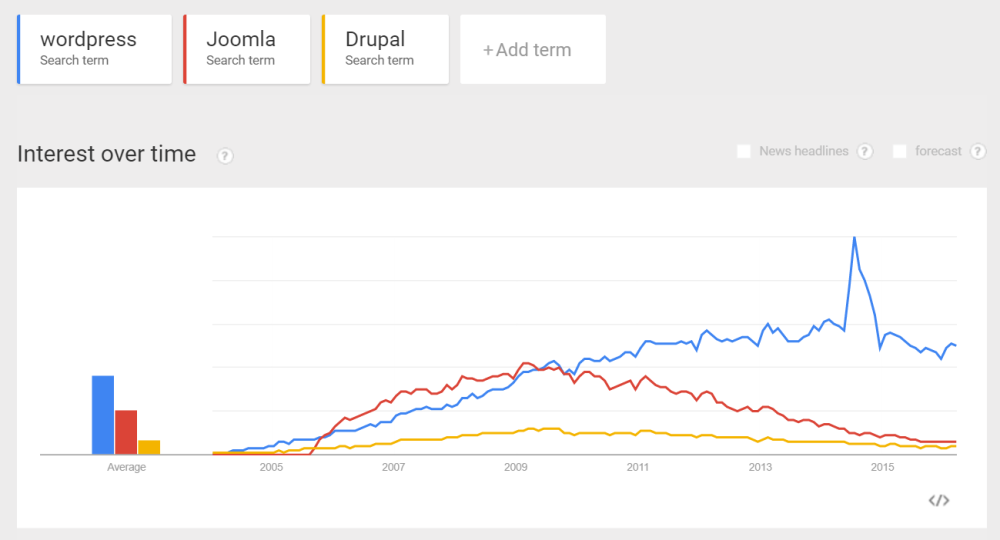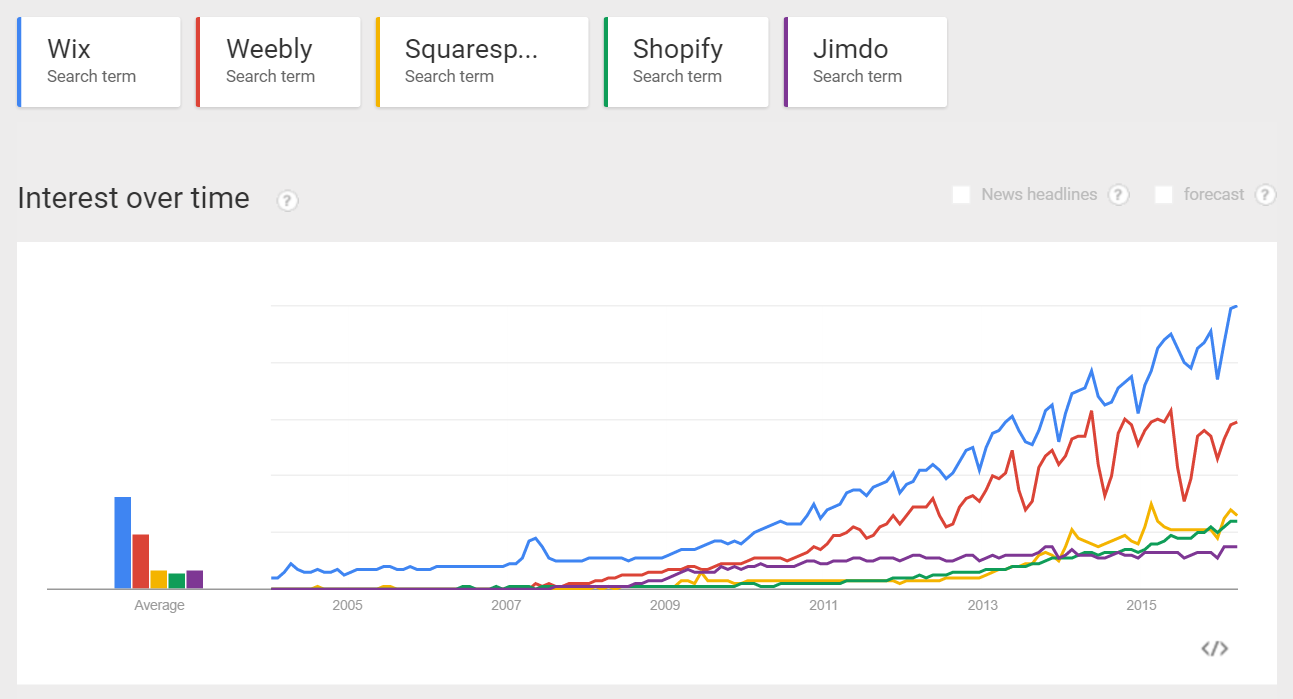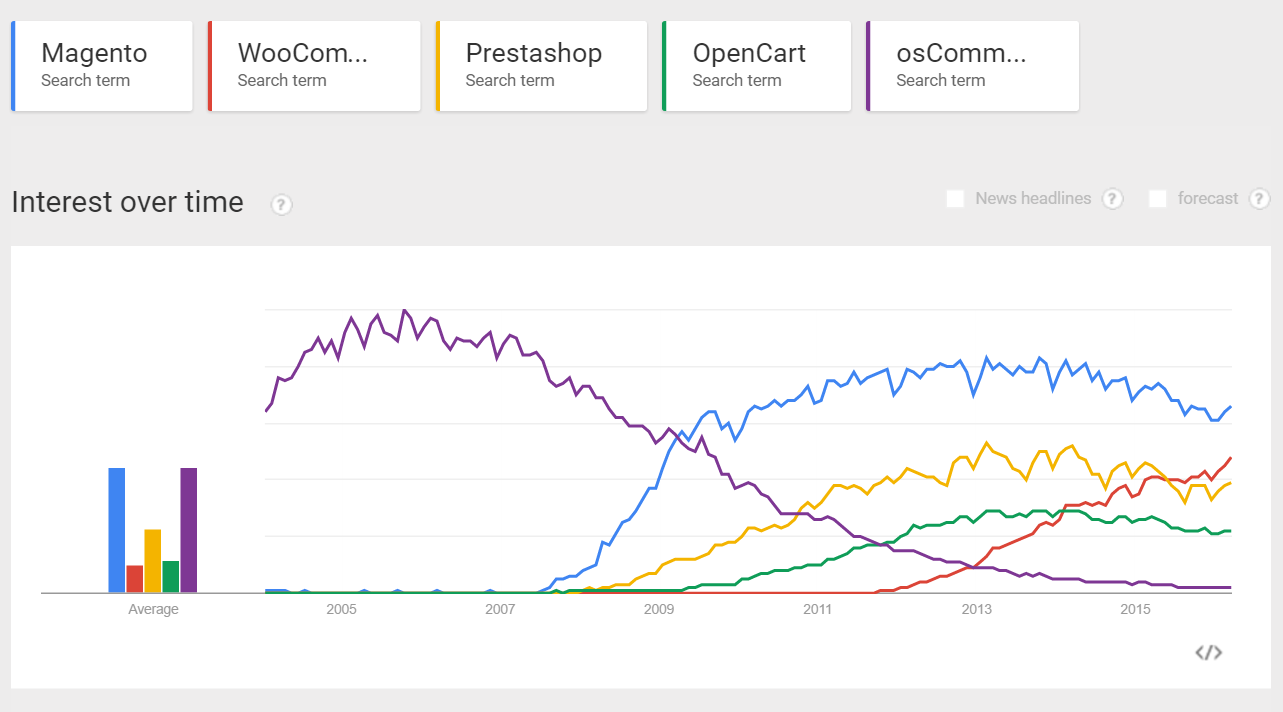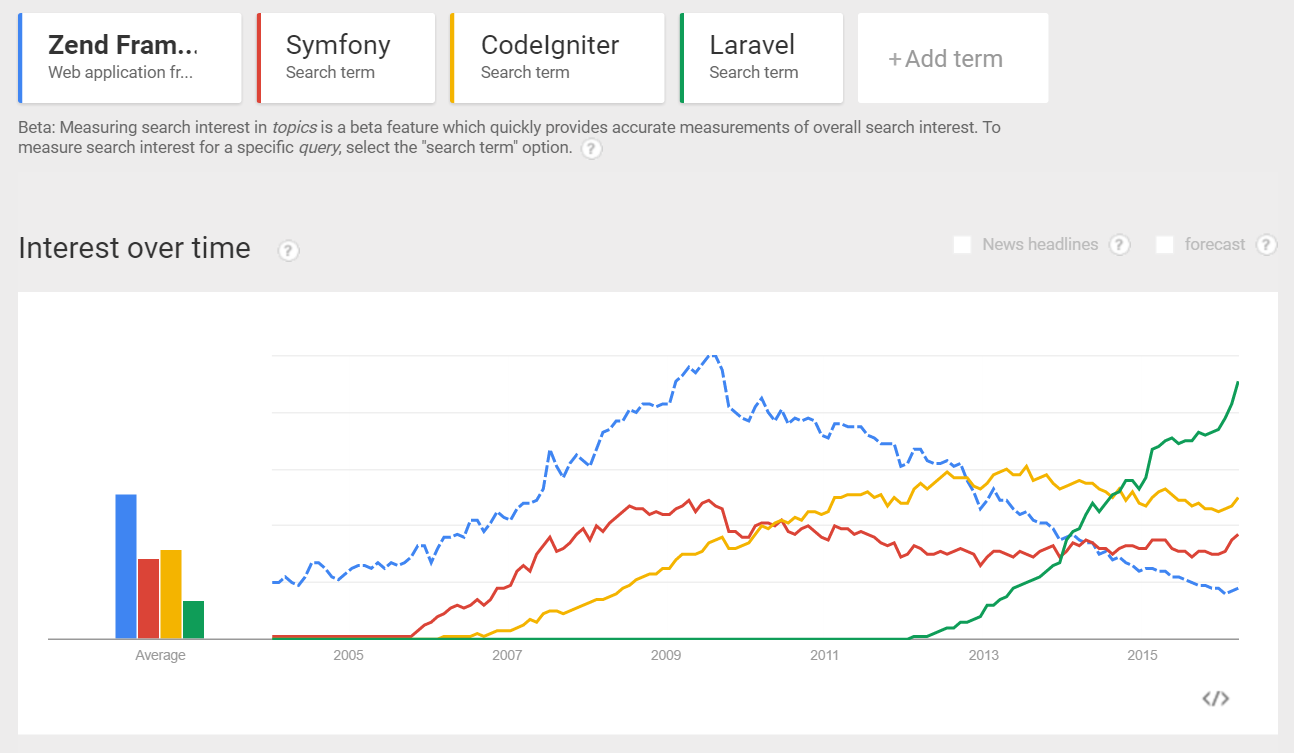The choice of technology is a crucial step in any digital project. All web professionals have painful memories with their first choice of technologies. Whether you want to create a basic website or redesign a webapp, you have to make informed decisions in an increasingly complex technological environment. To see things a little more clearly and better understand the key technological trends, InTrigger has realized a benchmark report.
For this first edition we decided to focus on four technologies:
- General CMS
- Ecommerce CMS
- Back end technologies
- JavaScript technologies
We have used several sources:
- W3Techs – Statistics issued of the 10 millions most visited websites (Alexa)
- BuiltWith – Statistics issued of 1er million most visited websites (Quantcast)
- Google Trends – Statistics on Google searches
General CMS – Website creation
WordPress is still dominating the CMS market with 60-70% market shares
WordPress reigns supreme on the CMS market. According to W3Techs, WordPress has a market share of 59% (vs 69% according to BuiltWith). And if we take all websites into account, including those who do not use CMS, WordPress is used by 25.7 % of websites in the world. Behind WordPress, Joomla and Drupal continue to occupy respectively the second and the third place.
Open source CMS trend
The three leader open source CMS no longer have the dynamic they had a few years ago, but they face different destinies if we analyze the W3Techs figures. Joomla has been collapsing since 2009. In 6 years, its market share decrease by 50%, from 12 to 6%. Drupal is experiencing a slight decline since 2013, its market share went from 7 % in 2013 to 5% today, but Drupal keeps strong positions on websites with a large audience. After a slowdown in growth in 2014, WordPress lost market share for the first time in 2015.
Google Trends confirms W3Techs inclinations. The Joomla curve tends to look like the one of MySpace; WordPress reached the glass ceiling and Drupal rest on solid fundamentals. If those 3 CMS are rather stalled, it is mainly because of the new generation of CMS, which often offer free versions, and which are now reaching maturity. No need to learn to tinker a WordPress theme, or to pay a freelancer to make a small ecommerce website, the “turnkey” solutions like Wix, Jimdo or Shopify really allow Mrs. Michu to create her own website alone.
Proprietary solutions: Wix, Weebly and Squarespace are growing strongly
These website creation software like Wix, Weebly or Squarespace are growing very rapidly, but they remain small compared to the open source CMS. The 5 website creation software illustrated in the Google Trends graph Google reach about 4 % of market shares, which is less than Joomla. The relative decline of open source CMS also reflects the growing maturity of Ecommerce CMS such as Magento or PrestaShop.
Ecommerce oriented CMS
A fragmented market dominated by WooCommerce
The Ecommerce CMS market is much more fragmented than the general CMS market. Nearly 35 % of Ecommerce websites use a customized Ecommerce solution or software, weighing less than 0.5% of market share. We prefer to use the term Ecommerce solutions rather than Ecommerce CMS because BuiltWith statistics include all kinds of technology which enable to create an Ecommerce store and not just content management (the primary meaning of a CMS or Content Management System). WooCommerce, the most popular Ecommerce solution is a WordPress plugin (recently acquired by Automattic, WordPress main contributor and WordPress.com editor).
Open source Ecommerce CMS trends
Curiously, it’s Magento which plays the role of heavyweight on Google Trends, but the dynamic of WooCommerce suggests that Magento will lose its place soon. PrestaShop and OpenCart are facing the same situation, and unfortunately it seems that the popularity of both CMS is going down slightly. Why?
We can find part of the answer by looking at the Ecommerce proprietary solutions evolution.
Ecommerce proprietary solutions – Shopify and Squarespace reign supreme
Shopify and Squarespace are experiencing an impressive growth since 2 or 3 years, and this does not seem to stop. If Squarespace remains a solution that addresses very simple Ecommerce websites such as WooCommerce; Shopify is a complete platform and is becoming a credible alternative to PrestaShop.
Back end technologies
Programming languages
PHP remains the most popular programming language. It is used by almost 30 % of websites in the world. Behind PHP, there is ASP which is used on Microsoft Net environments, Java (J2EE), Ruby (Ruby on Rails framework) and Python. If you are considering developing a website in PHP, you must choose the framework carefully.
Popularity of PHP frameworks
Zend and Symfony were clearly dominating the market in the last few years, yet the situation has changed. The popularity of Zend melted and that of Symfony is constant, while lighter frameworks like CodeIgniter, and especially since 2013 Laravel, are growing rapidly.
JavaScript Technologies
JS Libraries
JavaScript is a programming language executed by the web browser, or by web servers, it is mainly used for creating “dynamic” web pages (e.g. chat, twitter feed, etc.). JavaScript libraries like jQuery and Bootstrap have gained in popularity in recent years. Moreover, frameworks like AngularJS have become essential for the development of increasingly numerous web applications.
JS Frameworks
The statistics are from BuiltWith, which included very different technologies in the JS Libraries category. Putting the Facebook SDK, jQuery and Lightbox in the same table does not make much sense, but these figures still allow having an idea of the penetration rate of the more used JS technologies. In terms of dynamics, we used W3Techs figures to analyze the main trends over the last 5 years.
jQuery is experiencing an impressive growth since 2011. Almost 70 % of worldwide websites are using jQuery to simplify the writing of JavaScript and access to lots of useful jQuery libraries. Bootstrap is a very rich library, and is used by more than 10 % of websites.
To access all of the numbers, we invite you to browse the SlideShare in introduction. Feel free to comment if you want to clear a technical point, or simply ask a question about a technological choice you are facing.












Leave a Reply